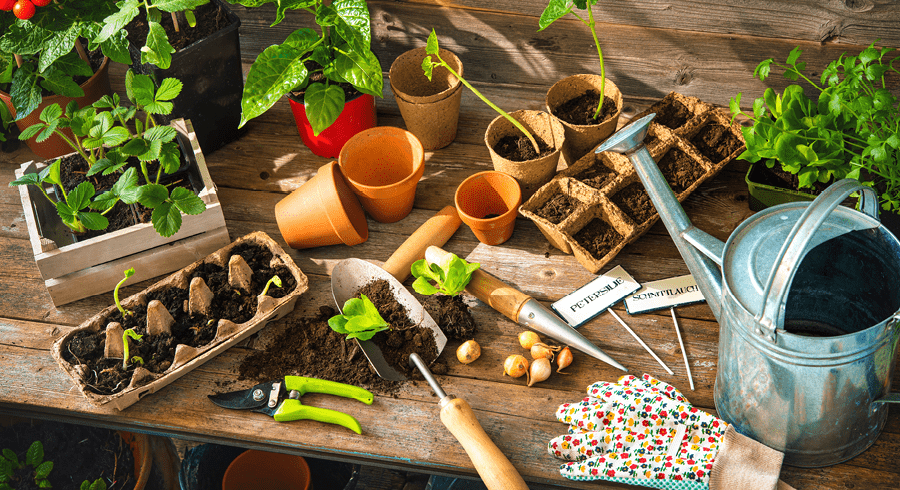How to Sow Seeds Indoors Successfully


When it's cold outside early in the year, your seedlings will need a little more TLC to help them grow and thrive. Some vegetables, like courgettes, kale and purple sprouting broccoli, are highly sensitive to the cold when young, so they need starting off inside where it's warmer.
To do this well, use seed compost which has been specially formulated to give seeds the best start possible for healthy growth. Compost is also sterilised so it’s free from pests and plant diseases, which regular garden soil may not be. Once you’ve got your compost, simply follow our easy step-by-step guide to learn how to sow seeds indoors successfully.


1. Prep your pots
First of all, wash your pots in hot soapy water and rinse before filling them with compost. This ensures that your seeds won’t catch any fungal diseases.
View Plant Pots >


2. Sow the seeds
Pat the surface of your compost to flatten it and sprinkle on some seeds. Most of them will germinate so be careful not to sow too many! Cover them up with a thin layer of compost, place them in a propagator in a warm, bright place and remove the lid as soon as the seedlings appear.
View Propagators >


3. Potting on
When your seedlings are 7-10cm tall, or have developed their first true leaves (not the first pair that open), they’re ready to transplant. Transferring them to a larger pot will give them more room to develop. Transplanting seedlings involves a process called ‘pricking out’: You do this by very gently easing them out of the tray with a pencil or dibber, holding them by a leaf to avoid damaging the stems or roots. Resting the roots on your pencil, place them into ready-made holes in pots filled with either potting compost or a good multi-purpose compost, and lightly firm the compost around them, making sure the leaves are just above the surface. Water them regularly to keep the compost moist and keep the plants somewhere warm, draught-free and bright, but out of direct sunlight.
View Compost >


4 .Hardening off
After spending their early life indoors, your plants will need to acclimatise to life outdoors, which involves a process called 'hardening off'. Every day for a week, place them outside in a sheltered area away from direct sunlight, bringing them in at night. When you start to do this, prepare the soil you plan to use as your plants’ new home by raking in a general-balanced fertilizer. This will provide them with plenty of nutrients and help them thrive when they’re planted out.
View Fertilizers >


5. Planting Out
Once your plants have spent a week hardening off (and the last frost has been and gone), use a hand trowel to dig a hole a little larger than the size of the roots. Then tip the plant carefully out of its pot, using your hand over the top of the pot to catch any compost, and place it in the hole. Firm the soil around it, so the plant is roughly at the same level in the soil as it was in the pot. Once planted, water them well and make sure you water them regularly afterwards, especially during dry sunny spells and then again later on in the evening. If there's a risk of frost after you've planted them out, cover your plants at night with an old sheet.
View Garden Tools >










